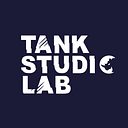Figma: improve your design, work with the latest technology.
Figma is a web design-based design tool that in recent years has been gaining many followers. Everything with a graphical interface can be designed from Figma, whether it’s web pages, mobile screens, or even smartwatches.
You’ve probably heard of Figma, the web design-based design tool that has gained a lot of followers in recent years, but how we can use it? What their resources are?
In this blog you can glimpse the advantages that Figma presents with the aim that you can assess if this tool fits your needs and how to get the most out of it.
What is this Figma?
First of all it is never wrong to define what Figma is to know what it is and what it is for.
Figma is a tool to design prototypes, wireframes, interface, in a few words everything that has a graphical interface can be designed from Figma whether web pages, mobile screens or even smartwatches.
The main feature of Figma is that it is web-based and the projects are accessed through a browser. This peculiarity is what has made it so famous, then goes on to explain the advantages of this fact.
Advantages of working with Figma
First of all, Figma is a tool designed for teamwork in collaborative environments. It goes on to explain this:
Figma, although there is an application, is usually accessed via the web.
What are the implications of this?
The information is stored in the cloud, this feature, along with the fact that it is accessed via a browser, makes it possible to access your projects from any device with an internet connection. This is especially useful in these years when work varies and sometimes you have to work from home and sometimes from the office.
Taking advantage of this access from a multitude of devices, the creators of Figma decided to make the tool as collaborative as possible by thinking about the work teams. This has meant that all projects can be modified in real time by different users at the same time and you can see what each one does. This functionality has also brought a version control in the projects so that you can see what changes each user has made and in case you have to go back in time, make it as easy as clicking a button.
These features make the tool especially attractive for those work teams that need to work simultaneously on projects from different parts of the globe.
Component libraries in Figma
Continuing with the team-oriented workspace, Figma presents component libraries.
Component libraries allow teams to create items and share them between different projects in such a way that they can be reused without having to constantly recreate them. This streamlines the designers’ workflow and avoids inconsistencies between models that must have similar design systems.
Inspect items with Figma
According to make the life of developers a little easier, Figma allows you to explore how CSS code would look from different elements.
Sharing designs at Figma
Figma is committed to simplicity when sharing designs with those outside the working group. To do this, it simply offers the possibility to share the designs through URLs so that those interested in accessing the designs only have to enter the URL. No accounting, no wasting time on tedious processes.
Community
This design tool has a lot of people full of ideas to contribute to the community. Figma knows that and that’s why it enables a repository of plugins, features created by the community that can be added to Figma to extend its capabilities.
Working offline
All the advantages of working with Figma online have been discussed. However, Figma also offers the possibility to work offline through its application. This way of working allows you to edit the files which are automatically synchronized at the moment when the internet connection is recovered.
Interface
To finish with the different advantages of working with Figma, you have to mention the user interface. This interface stands out for its simplicity and its intuitive way of organizing the different elements around the screen.
This makes that those users who do not have so much experience using interface design tools have a quick and simple learning curve and that, those more professional users are able to carry a fast and fluid workflow.
Figma has the following features that stand out for the advantages they provide to their users:
- Web-based but also has an application.
- Component libraries for use between projects and designs.
- CSS code of the components.
- Share layouts using URLs
- Community and plugins
- Offline work through the application.
- Simple and intuitive interface
These features offer a multitude of advantages to those multidisciplinary work teams, especially in these years that remote work has become so popular.
The biggest advantage of this UI design tool is that it is completely collaborative. We can have different work teams around the world, and we’ll still be working collaboratively. Everyone will be able to see what you’re doing in real-time.
We invite you to read the next blogs.
House or coworking, what space suits you as a freelancer?
Where to learn free web design and development? Online courses
